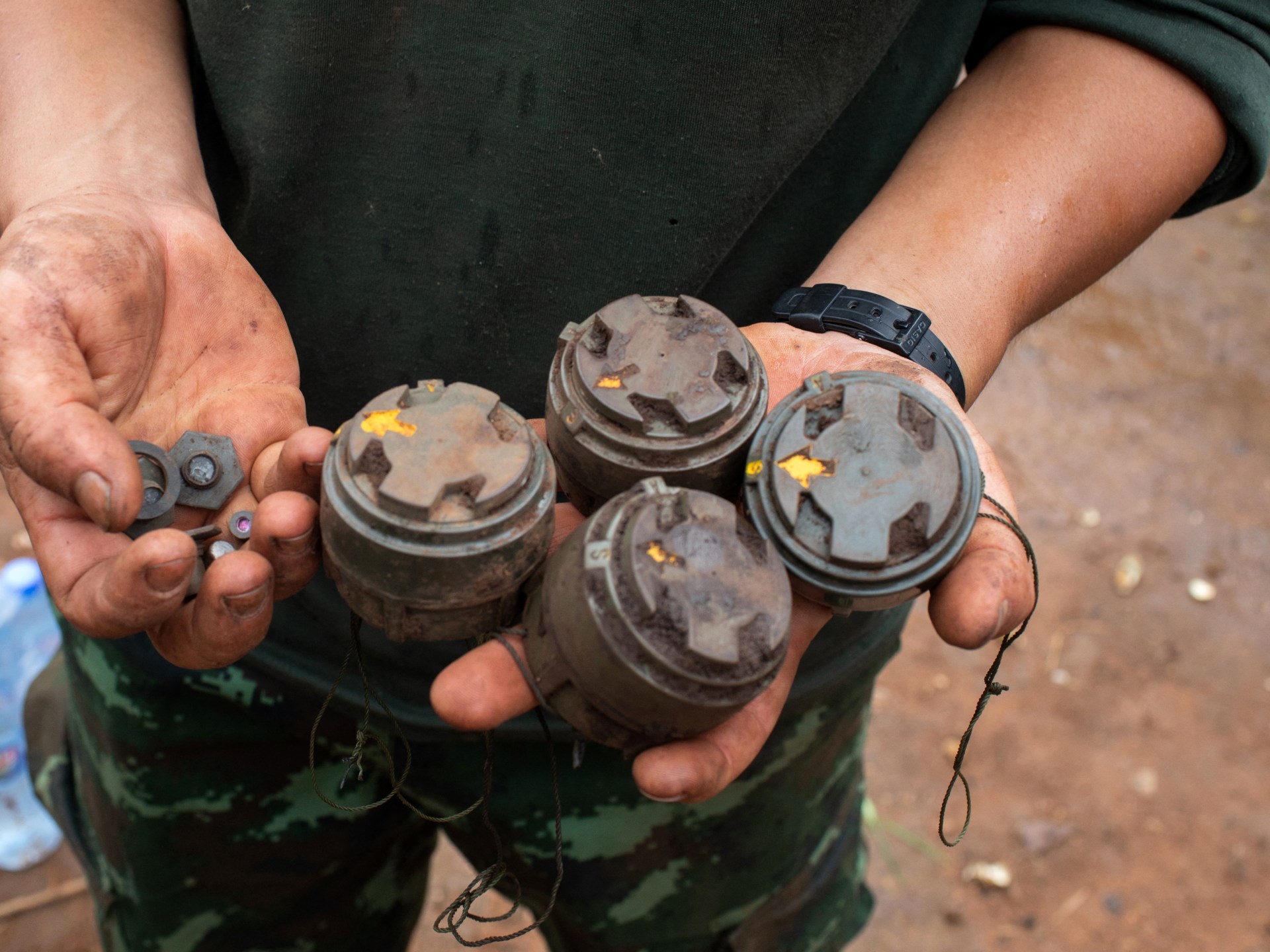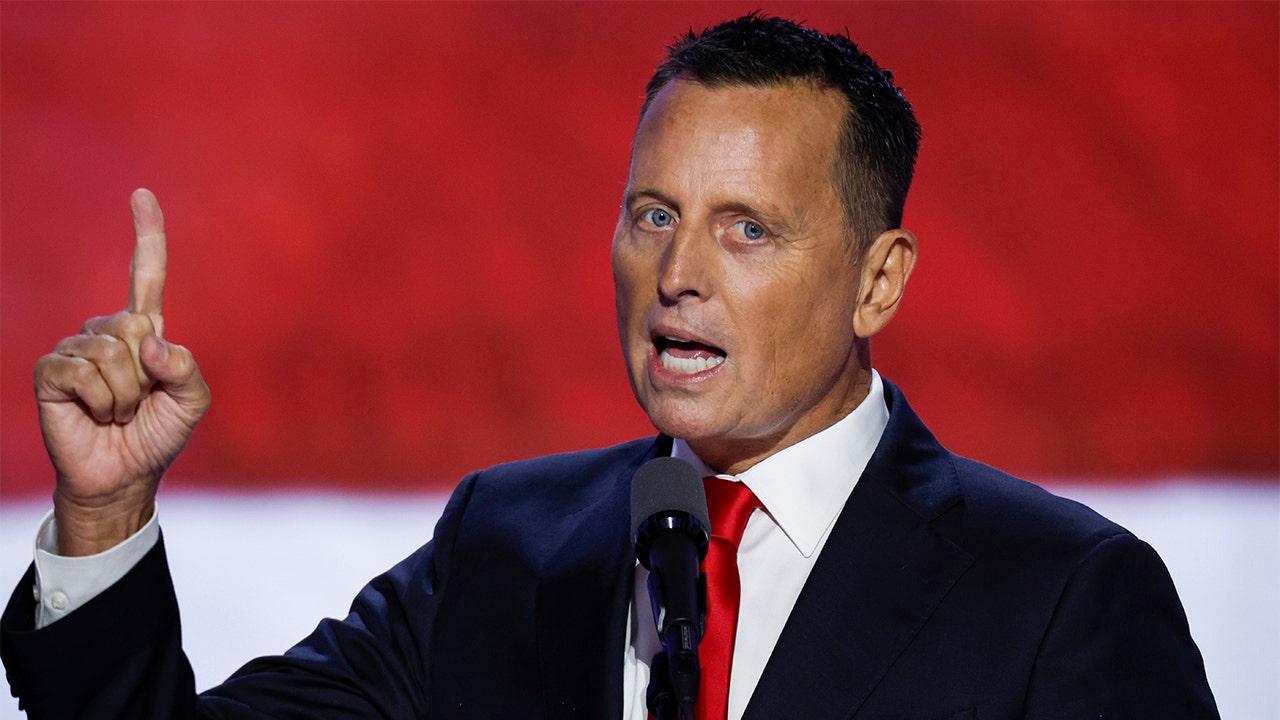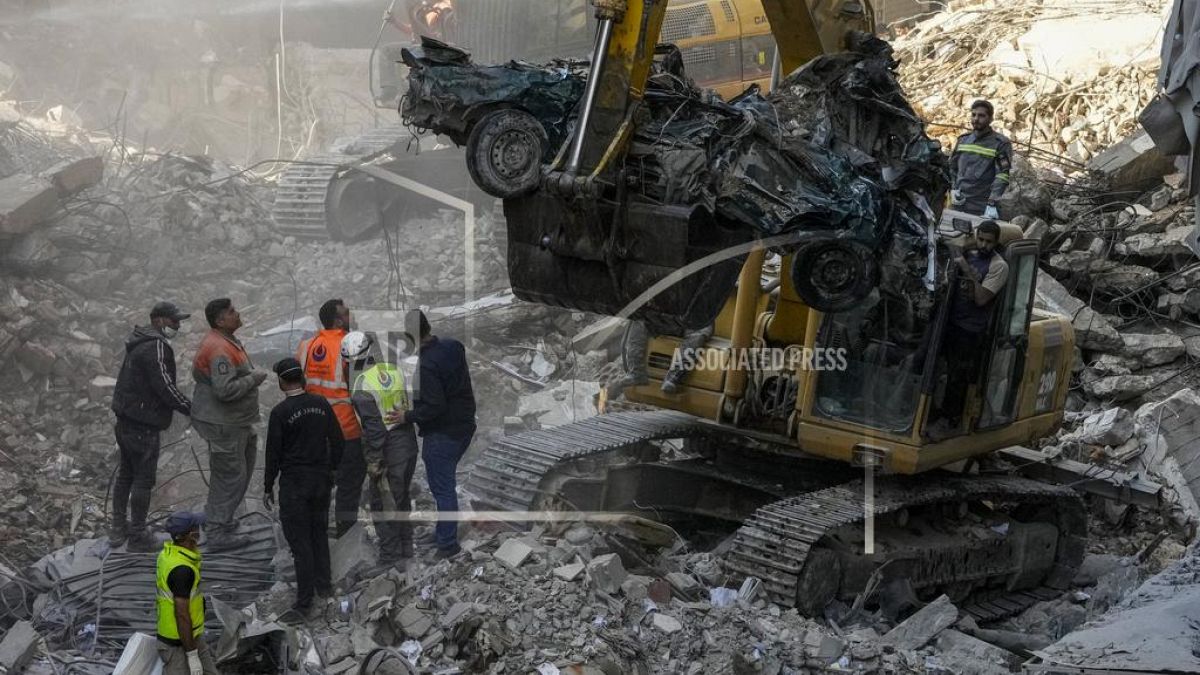World
EU leaders gather in Brussels to talk Ukraine, China and migration
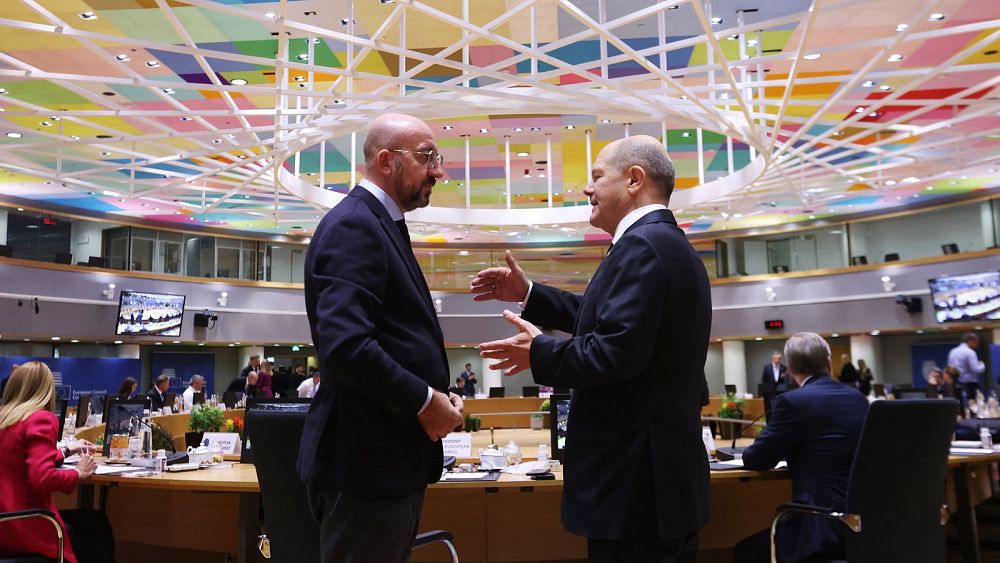
Leaders from the 27 member states are gathering today in Brussels for a summit with a busy agenda on the table.
The two-day meeting of the European Council lacks a clear thematic focus and will instead touch upon a variety of topics, including military support for Ukraine, confiscation of frozen Russian assets, economic threats posed by China and the latest flare-up of tensions between Kosovo and Serbia.
Migration will also feature prominently in the debate, particularly in the context of cooperation with neighbouring countries to curb the arrival of new asylum seekers.
Looming over the discussions will be the short-lived insurgency launched over the weekend by Yevgeny Prigozhin and his mercenary troops of the Wagner Group, an extraordinary moment of defiance against Vladimir Putin’s iron-fist rule that European governments are still trying to comprehend.
“Russia’s war in Ukraine is continuing relentlessly. Our unwavering unity stands in contrast to the disunity in Russia showcased by this weekend’s events,” Charles Michel, the president of the European Council, wrote in his invitation to leaders.
The summit will kick off on Thursday afternoon and be preceded by a lunch with NATO Secretary-General Jens Stoltenberg.
The talks around Ukraine are expected to be multi-faceted and complex.
EU leaders will discuss a new €50-billion proposal to provide Kyiv with long-term financial support, a €500-million package of military aid that remains blocked by Hungary, progress made in the accession process, and the possibility of providing long-term security guarantees for Ukraine, although this last point will not be properly fleshed out until the NATO summit in mid-July.
The yet-to-be-resolved question of how to use the frozen assets of the Russian Central Bank to pay for the war-torn nation’s reconstruction is also expected to emerge during the long debate.
Speaking on condition of anonymity, diplomats say there is political will around the table to move forward with the project of managing the assets and re-directing the profits towards Ukraine, but there are still too many legal pitfalls along the way.
Making matters trickier, the European Central Bank has raised concerns about the potentially damaging effects the untested move could have on financial stability and the euro’s role as a global reserve currency.
“This is extremely complicated, it has never been done before,” said a senior diplomat. “We all feel personally that we want to do it, but it has to be feasible.”
On China, the discussion is set to be structured around the economic security strategy recently presented by the European Commission, the first of its kind.
The strategy, which does not mention China by name but is evidently inspired by the fraught relations between the bloc and the Asian superpower, recommends greater oversight over cutting-edge technology exports that could “enhance the military capacities of some countries of concern.”
While not as hawkish as the landmark speech delivered by Ursula von der Leyen in late March, the document builds upon her idea of “de-risking” as the go-to approach to deal with Beijing, a concept later endorsed by the Group of Seven.
“Europeans want to cooperate and engage with China, but from now on they will do so with a clear vision that is no longer naïve,” said another diplomat. “(We’re) no longer under the illusion that China is, in fact, going to become a market economy, that China has fair cooperation and competition practices.”
Regarding migration, leaders will zoom in on the so-called “external dimension,” coded language for deepening cooperation with non-EU countries in order to prevent migrants from reaching the bloc’s shores.
Earlier this month, the European Commission green-lighted a €100-million package for Tunisia to improve border management, which will be followed by a memorandum of understanding next week.
But what reinforcing the “external dimension” exactly means is still up in the air.
A small group of countries, believed to include, among others, Austria and Denmark, is pushing to explore “innovative solutions” to decrease the number of arrivals, a term that other member states interpret as measures that would in practice be incompatible, or borderline incompatible, with international law.
The summit takes place two weeks after a boat carrying between 400 to 750 migrants capsized near Pylos, in southern Greece, in what is considered one of the worst shipwrecks in recent Mediterranean history.
This piece has been updated.

World
Ron Ely, Star of TV’s Tarzan, Cause of Death Revealed

ad
World
Scientists study ‘very rare’ frozen remains of 35,000-year-old saber-toothed cub

A mummified saber-toothed cub of a catlike animal dating back 35,000 years was left almost perfectly preserved in Siberia’s permafrost.
The remains had been found back in 2020, northeast of Yakutia, Russia. Research regarding the study of the cub was published in the journal Scientific Reports on November 14, 2024.
The discovery of frozen remains from the Late Pleistocene period is “very rare,” according to the published research, though most discovered in Russia lie in the Indigirka River basin, the authors note.
The mummified saber-tooth cub found in Siberia’s permafrost was studied by scientists and found to have been buried around 35,000 years ago. (Alexey V. Lopatin)
12-YEAR-OLD BOY STUMBLES UPON STUNNING ANCIENT FIND WHILE WALKING DOG IN ENGLAND: ‘RELATIVELY RARE’
The mummified cub remained well-preserved, frozen in time for thousands of years. The frozen nature of this find left it in impressive condition, even still containing fur.
“The mummy body is covered with short, thick, soft, dark brown fur with hair about 20–30 mm long,” the authors wrote in the published research, also pointing out that the fur that was located on the back and neck of the cub was longer than the hair that was found on the legs.
The head of the mummy was also left well-preserved, down to its chest, front arms and paws.
IRISH FARMER FINDS NEAR-60-POUND SLAB OF ANCIENT BOG BUTTER ON HIS LAND BY ‘PURE LUCK’
The study of this find wasn’t just a unique opportunity for scientists, it also provided first-of-its kind research.
“For the first time in the history of paleontology, the appearance of an extinct mammal that has no analogues in the modern fauna has been studied,” the authors of the study explained.
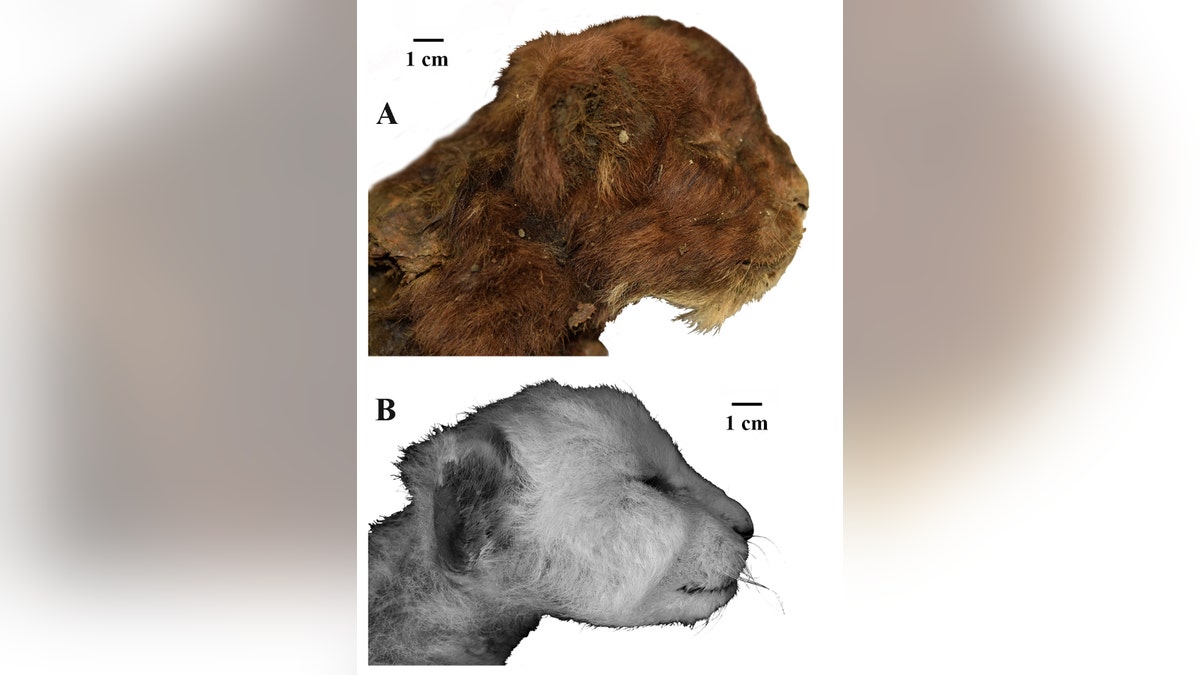
This discovery provided an extremely unique and rare opportunity for scientists to study an extinct species that was so well preserved. (Alexey V. Lopatin)
The scientists determined that the cub had died at about three weeks old. It was identified by the authors of the study as belonging to the species Homotherium latidens and had many differentiations from a modern lion cub of a similar age.
The shape of the muzzle displayed by the mummified cub, which had a large mouth and small ears, plus a “massive” neck, long forelimbs and a darker colored coat, were all among key differences from today’s modern lion cubs that scientists observed.
2,000-YEAR-OLD ROMAN ROAD DISCOVERED BY ARCHAEOLOGISTS IN LONDON
Scientists also worked in their research to find out how the extinct species was able to survive through frigid temperatures.
Large contributors to their survival were the shape of the large paws and absence of carpal pads. Scientists believe these elements helped them get through the snow.
In recent years, there have been other ancient animals found in Siberian permafrost.
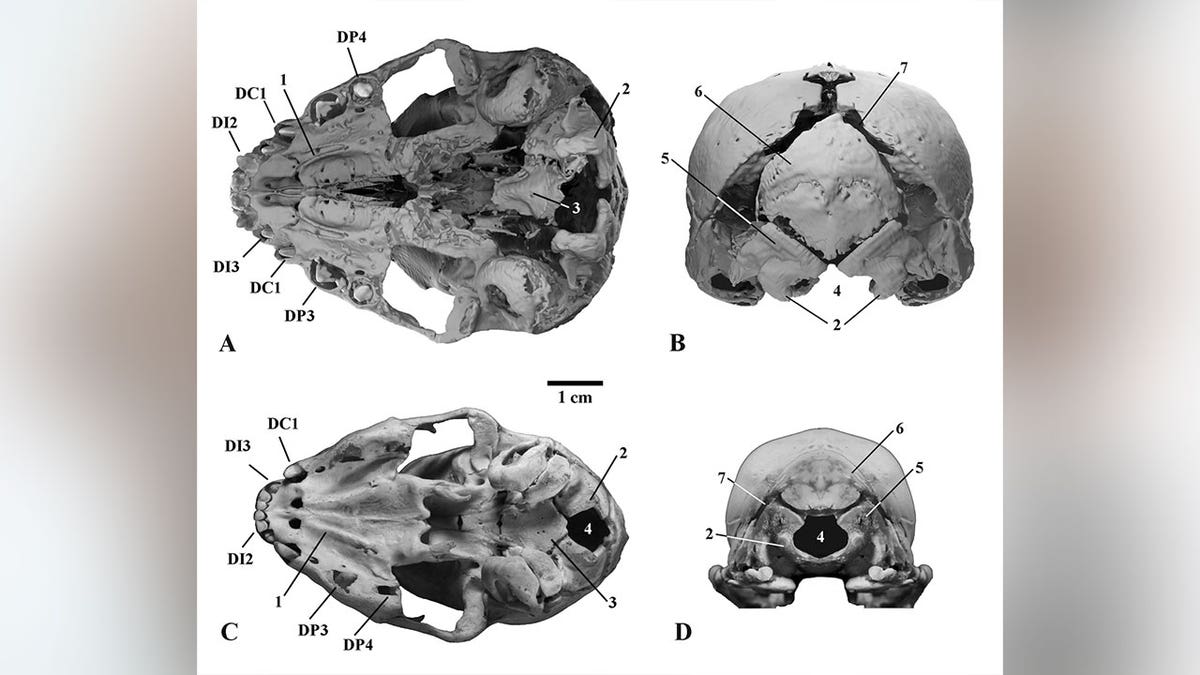
Analysis of the cub’s skull helped scientists identify it as belonging to the genus Homotherium. (Alexey V. Lopatin)
For example, in 2021, a mummified wolf was discovered that dated back over 44,000 years, Live Science reported in June 2024.
World
More than 100 Palestinians killed in Israeli attacks on Gaza in 48 hours

Director of the Kamal Adwan hospital says several staff wounded in Israeli bombardment.
At least 120 people have been killed in Israeli attacks on Gaza in two days, Palestinian health officials said, as Israel intensified its bombardment across the besieged territory.
At least seven people were killed when a residential home was hit overnight in the Zeitoun suburb of Gaza City, health officials said on Saturday. The other deaths were recorded in central and southern Gaza.
Israeli air raids caused significant damage to al-Faruq Mosque in the Nuseirat refugee camp in central Gaza, according to a social media video verified by Al Jazeera.
Israeli forces also deepened their ground offensive and bombardment of northern Gaza, where one of the last partially operating hospitals was hit, wounding several workers.
Hussam Abu Safia, director of the Kamal Adwan Hospital, said in a statement on Saturday that Israeli forces “directly targeted the entrance to the emergency and reception area several times, as well as the hospital courtyards, electrical generators, and hospital gates”.
The bombardment “resulted in 12 injuries among doctors, nurses, and administrative staff within the emergency and reception areas”, he said.
The Israeli military rejected the allegations and said it was “not aware of a strike in the area of the Kamal Adwan Hospital” following an initial review of the situation.
On Friday, Gaza’s Ministry of Health said hospitals have fuel left for only about two days before it needs to start restricting services.
Israel’s military imposed a siege and launched a renewed ground offensive in northern Gaza last month, saying it aimed to stop Hamas fighters from waging more attacks and regrouping in the area.
The United Nations warned earlier this week that almost no aid had been delivered to northern Gaza since Israel’s renewed offensive as aid groups and food security experts warn of a famine in the area.
In a call with Defence Minister Israel Katz on Saturday, United States Defense Secretary Lloyd Austin pressed Israel to “take steps to improve the dire humanitarian condition in Gaza”, the Pentagon said.
Israel’s assault on Gaza has killed more than 44,000 people and wounded more than 104,000 since October 2023, according to Palestinian health officials.
Israel launched its assault on Gaza after the Hamas-led attacks on southern Israel on October 7, 2023, in which at least 1,139 people were killed and about 250 others seized as captives.
A spokesperson for the armed wing of Hamas, Abu Ubaida, said later on Saturday that a female Israeli captive in the group’s custody had been killed in northern Gaza in an area under attack by Israel’s forces.
“The life of another female prisoner who used to be with her remains in imminent danger,” he added, accusing the government of Prime Minister Benjamin Netanyahu of being responsible and of undermining efforts to end the war.
-

 Business7 days ago
Business7 days agoColumn: Molly White's message for journalists going freelance — be ready for the pitfalls
-

 Science4 days ago
Science4 days agoTrump nominates Dr. Oz to head Medicare and Medicaid and help take on 'illness industrial complex'
-

 Politics6 days ago
Politics6 days agoTrump taps FCC member Brendan Carr to lead agency: 'Warrior for Free Speech'
-
/cdn.vox-cdn.com/uploads/chorus_asset/file/25739950/247386_Elon_Musk_Open_AI_CVirginia.jpg)
/cdn.vox-cdn.com/uploads/chorus_asset/file/25739950/247386_Elon_Musk_Open_AI_CVirginia.jpg) Technology5 days ago
Technology5 days agoInside Elon Musk’s messy breakup with OpenAI
-

 Lifestyle6 days ago
Lifestyle6 days agoSome in the U.S. farm industry are alarmed by Trump's embrace of RFK Jr. and tariffs
-

 World6 days ago
World6 days agoProtesters in Slovakia rally against Robert Fico’s populist government
-

 News5 days ago
News5 days agoThey disagree about a lot, but these singers figure out how to stay in harmony
-

 News6 days ago
News6 days agoGaetz-gate: Navigating the President-elect's most baffling Cabinet pick



